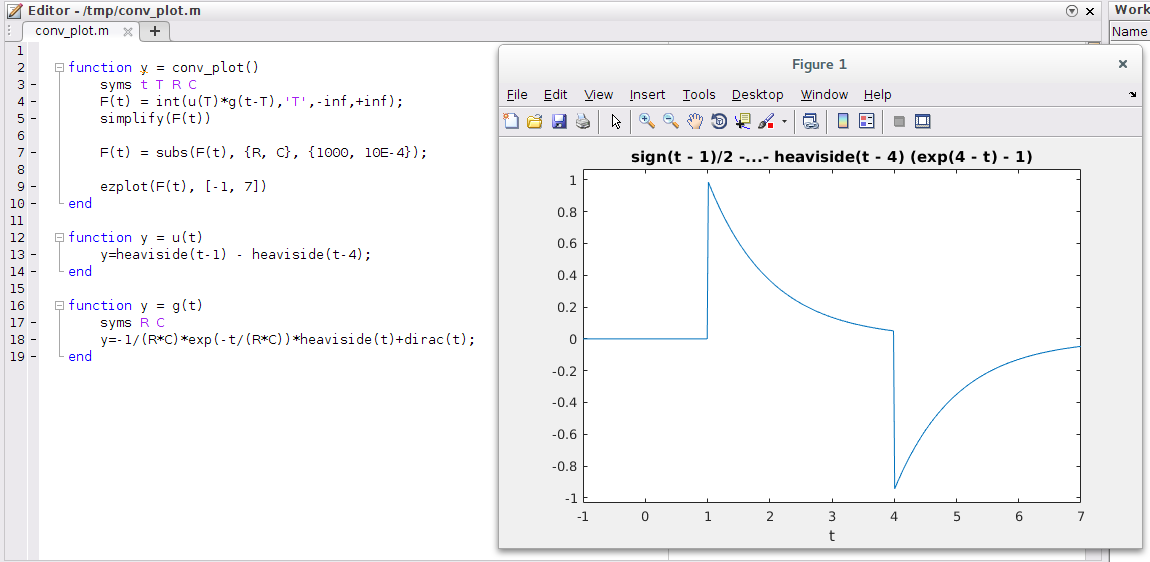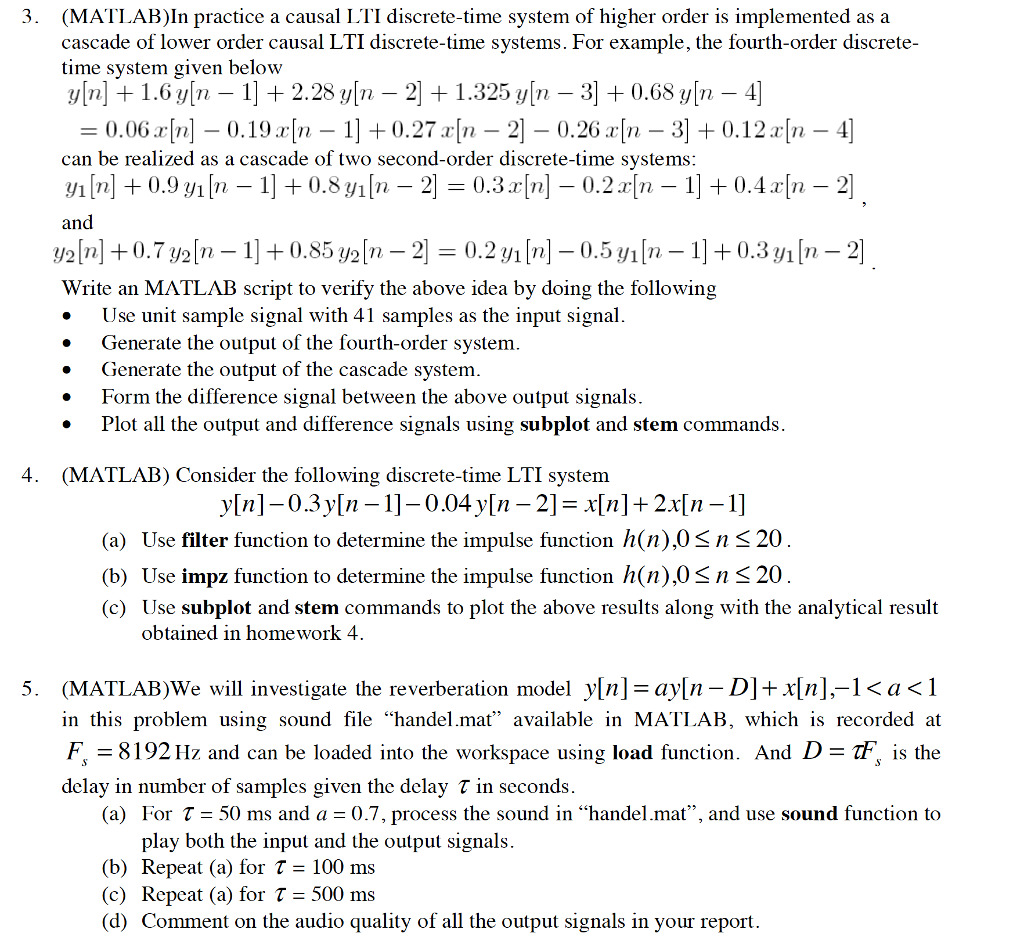

Using MATLAB to calculate the output of the system y(t).

(c) Use MATLAB to calculate and plot the convolution y = z *h where x = u(n + 1] - u = u(-2-n] - u. Generate a pulse function with a pulse width 1 second as an input function, x(t), and use the same exponential decay function as impulse response function, h(t). (b) Use MATLAB to calculate and plot the convolution y = xin * h where x = 6 - is the signal depicted in Figure P2.24(b) on page 143 of the book. The conv function in MATLAB performs the convolution of two discrete time (sampled) functions. (a) Use MATLAB to calculate and plot the convolution y = x *h where | x = a = 8 +8. Hi Guys, Am in need of a solution to convert some inbuilt MATLAB functions into embedded C code.
#Conv function matlab code
The following MATLAB code replicates the results of the discrete-time convolution example that was presented in the supplemental video lecture posted online: nx = -3:0 nh = -1:2 ny = -4:2 x = h = y = conv(x,h) figure() subplot(3,1,1) stem(nx,x) xlim() xlabel('x') subplot(3,1,2) stem(nh, h) xlim() xlabel('h') subplot(3,1,3) stem(ny,y) xlim() xlabel('y = x *h ')

In general, if a signal r is only non-zero on the interval a Then you can plot (t,u) on the same plot as f and h and the convolution displays correctly. 1 For your second question, valid means the range of output where there is full overlap between the convolving signals. Here's a simple MATLAB function for computing convolution using the Fast Fourier Transform (FFT), which is simply a fast algorithm for computing the DFT. How- ever, you have to be careful about the indices. For those who run into this problem, I found that after you perform the full conv, you need to shift the time axis by t 2-1+dt (0: (length (u)-1)) where u is the result of the convolution. Compute the inverse DFT to get the convolution. Transcribed image text: MATLAB problem: The conv function in MATLAB performs discrete-time convolution.#Conv function matlab full


 0 kommentar(er)
0 kommentar(er)
